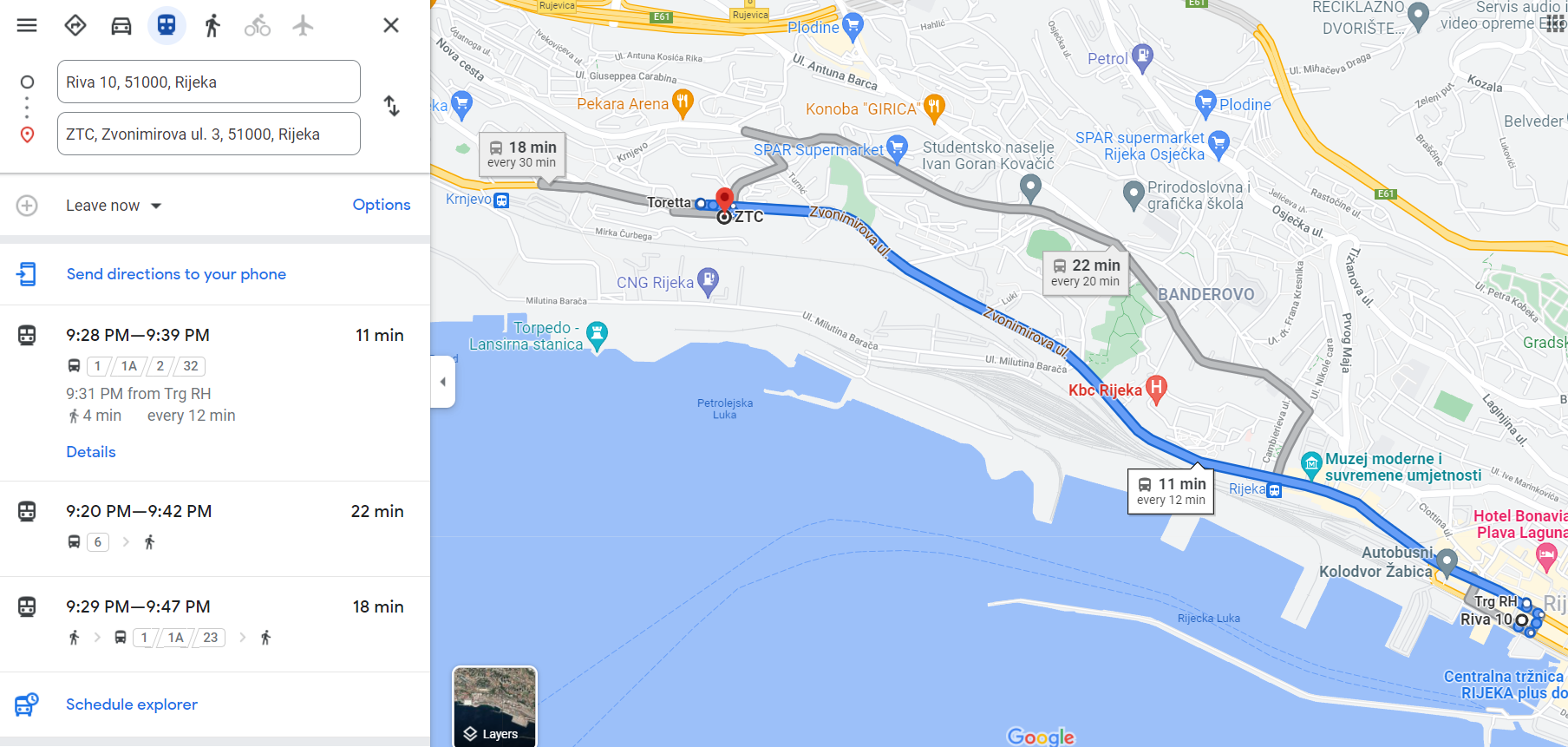10 Essential Mobile Apps for Traveling Around Croatia
May 9, 2022 - To make the most of your next vacation, here are some apps that shouldn't be missing from your phone when traveling around Croatia.
Oh yes, the good old days when having a city guide under your arm and an adventurous spirit were enough to travel the world and enjoy it to the fullest. Times have changed, and both the constantly evolving digital age and marketing make us aware of needs we didn't think we had. Today, we book airline tickets and accommodations, navigate with GPS, and change currencies, all on a mobile device.
But this is by no means a critique of the mobile app era. On the contrary, we will use this space to highlight some of the apps that will truly make your next trip easier, relieve the stress, and leave uncertainty while traveling around Croatia aside.
Just a reminder. The apps that we will list below are not necessarily secret or unknown, because some of them (we hope) you should already have installed! Basically, we remind you that the following apps are essential to make your experience in Croatia better.
Google Translate
Let's start off right: communication. Yes, English is spoken in Croatia. And very good English. Some will believe that it has to do only with the tourist context, but there are many reasons to explain the very good level of speaking and understanding of English in Croatia, even in public offices.
However, English is not the official language in Croatia. Croatian is. As a good tourist, you will find that the locals will really appreciate it if you replace some words in your sentences with Croatian ones. After all, it is a difficult language and they know it. You just have to try it and you will notice the gratitude almost immediately. Now, go ahead and use some common words or even dare to ask some questions in Croatian. Not only do we encourage you to do it to create a link with the locals, but also because it will be useful in case English is not enough to make it clear what you need with your host, your waiter at the restaurant, the bus driver, or even a random person in the street.
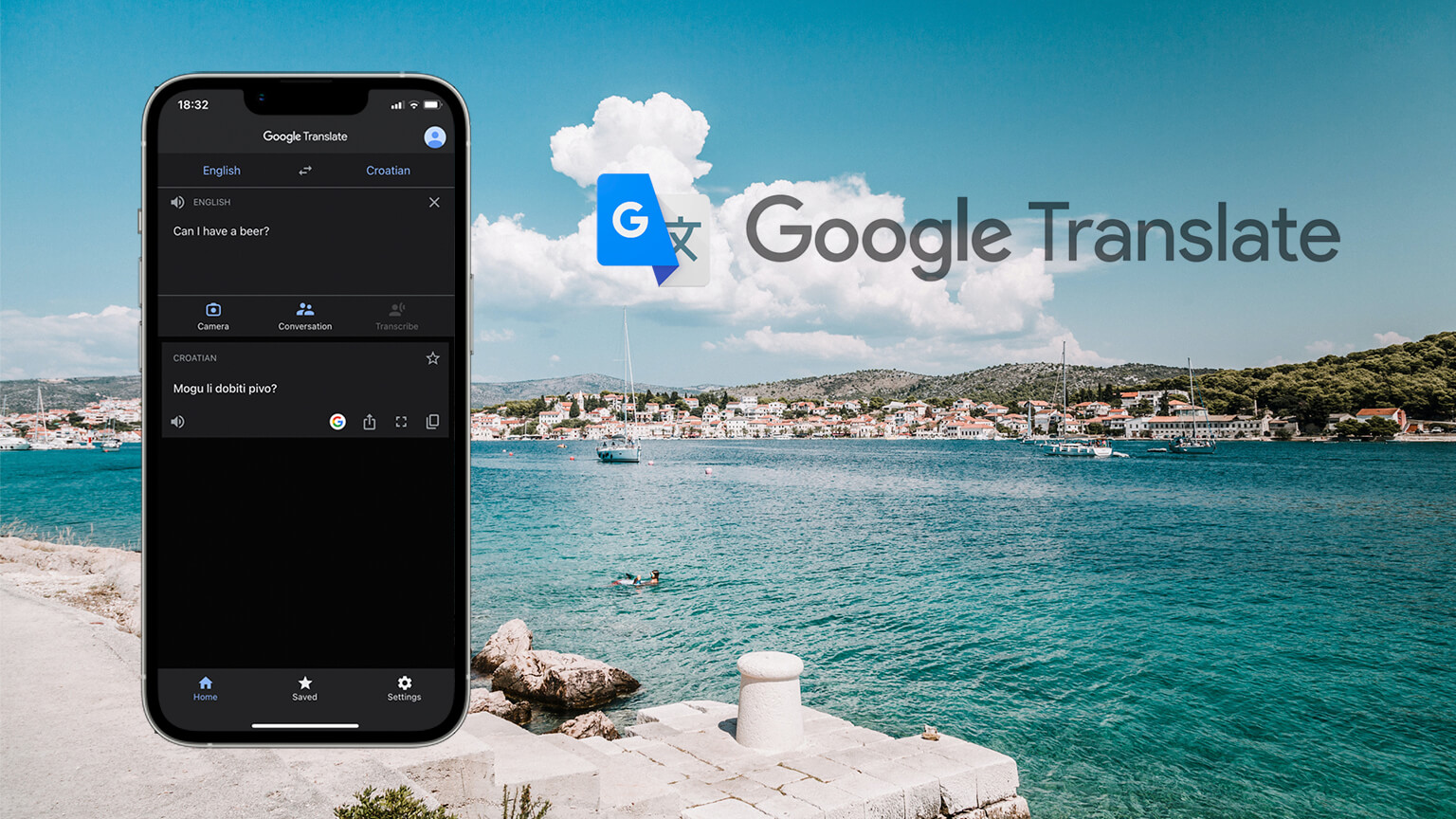
For this reason, Google Translate is the application that we recommend you to have. Personally, we recommend using their English to Croatian translator, which has more translations and fewer errors. There are other translation apps, but unfortunately, they do not have a Croatian translator or they are not well programmed for that function.
Available at Apple App Store and Google Play.
Currency
As you well know, the official currency in Croatia is the Kuna. Although it is very likely that you booked your accommodation and your tickets in euros, dollars, or pounds, once you land in Croatia you will need to know the currency exchange. It is true that you can use your credit or debit card to pay for everything here, but besides being a very good idea to be aware of the exchange rate, it is good to note that some places (such as bars, cafes, tours or activities) charge cash only.
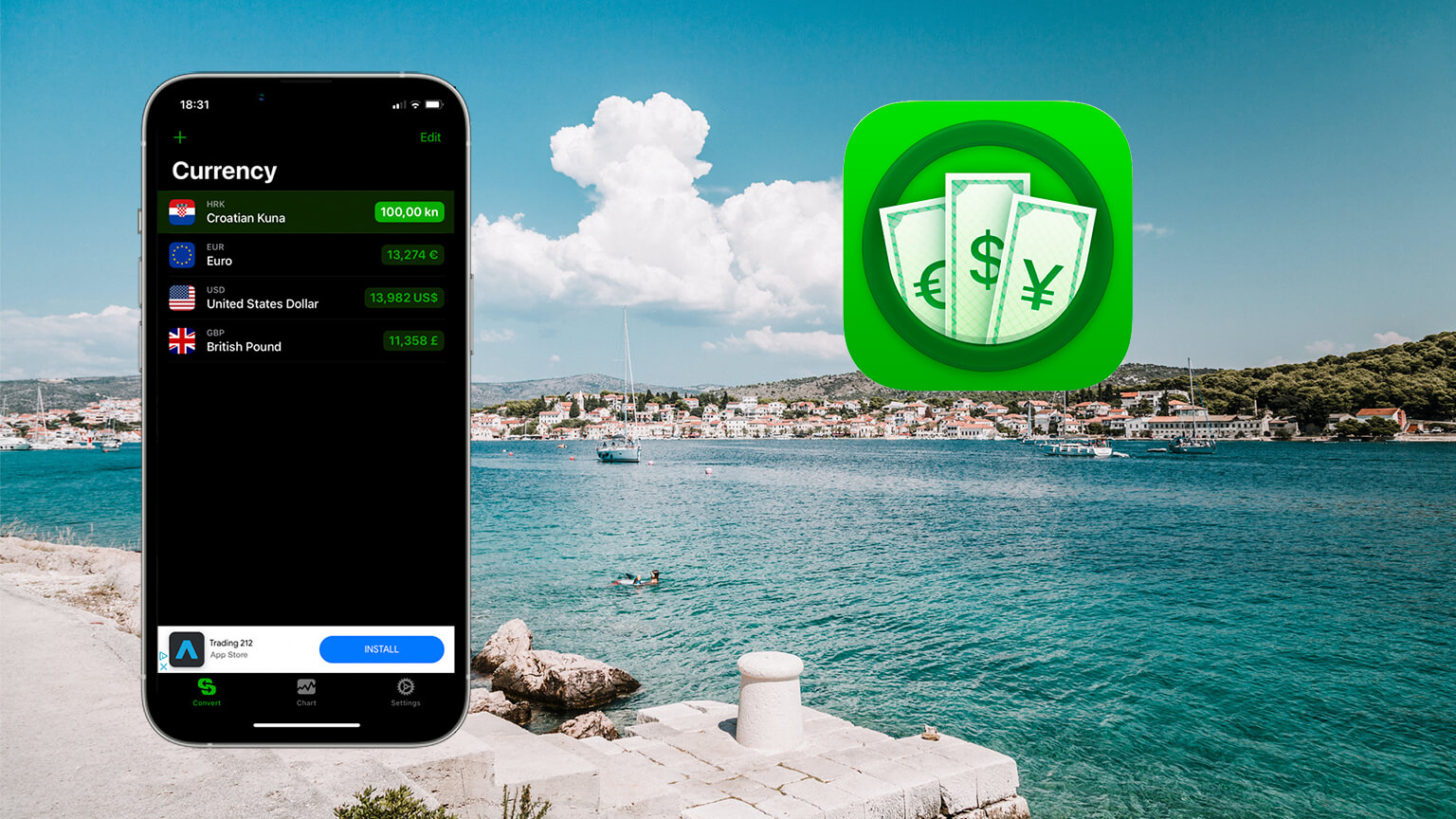
For this reason, before going to the nearest ATM to withdraw money or to an exchange house to change it, we recommend you use the Currency application, where you can see the value of the kuna versus absolutely all the existing currencies in the world. This will be a year of many changes in prices because from January 2023 Croatia will begin its transition process to the Eurozone. Therefore, we could not recommend you more to have this application at hand.
Available at Apple App Store and Google Play.
Google Maps
Another app that you should already have installed on your mobile device. Apple Maps is also an option, but from experience, I think Google Maps today is better designed to be used in a country like Croatia. Even the vast majority of satellite images from Google have been recently updated in the country, so it will be a great tool to guide you safely when traveling around Croatia.
In some cities, like Zagreb, the database of the public transport system is synchronized with this application, so it is possible to know exactly which bus or tram should take you to the place you need in real-time. In other cities, like Split, it is even possible to see the ferry routes in 360 views.

Google Maps will definitely be your ideal tool not only to find your accommodation, a good restaurant to eat at, or a secret beach to relax but also to build your itinerary if you plan to travel to several cities in Croatia, evaluate which is the best breakfast option based on its review system, or also to take alternative routes in case you come across a closed street or traffic.
Available at Apple App Store and Google Play.
Booking.com
No, we do not have a partnership with Booking.com, and we definitely know that there are numerous alternatives such as Hotels.com, Airbnb, Hostelworld, or Expedia. However, if there is one thing you need to know about accommodation in Croatia, it is that there is more than one type of accommodation. Actually, more than three. Honestly, more than ten. It's hard to count.
Hotels, villas, houses, apartments, rooms, bungalows, camping sites, eco-lodges, hostels... even boats! The offer of accommodation in Croatia is incredibly diverse, and this invites you to be open-minded and correctly evaluate which one will be able to effectively satisfy your dream vacation. Therefore, you need an accommodation search site that brings together all this diversity, and you can find it on Booking.com.
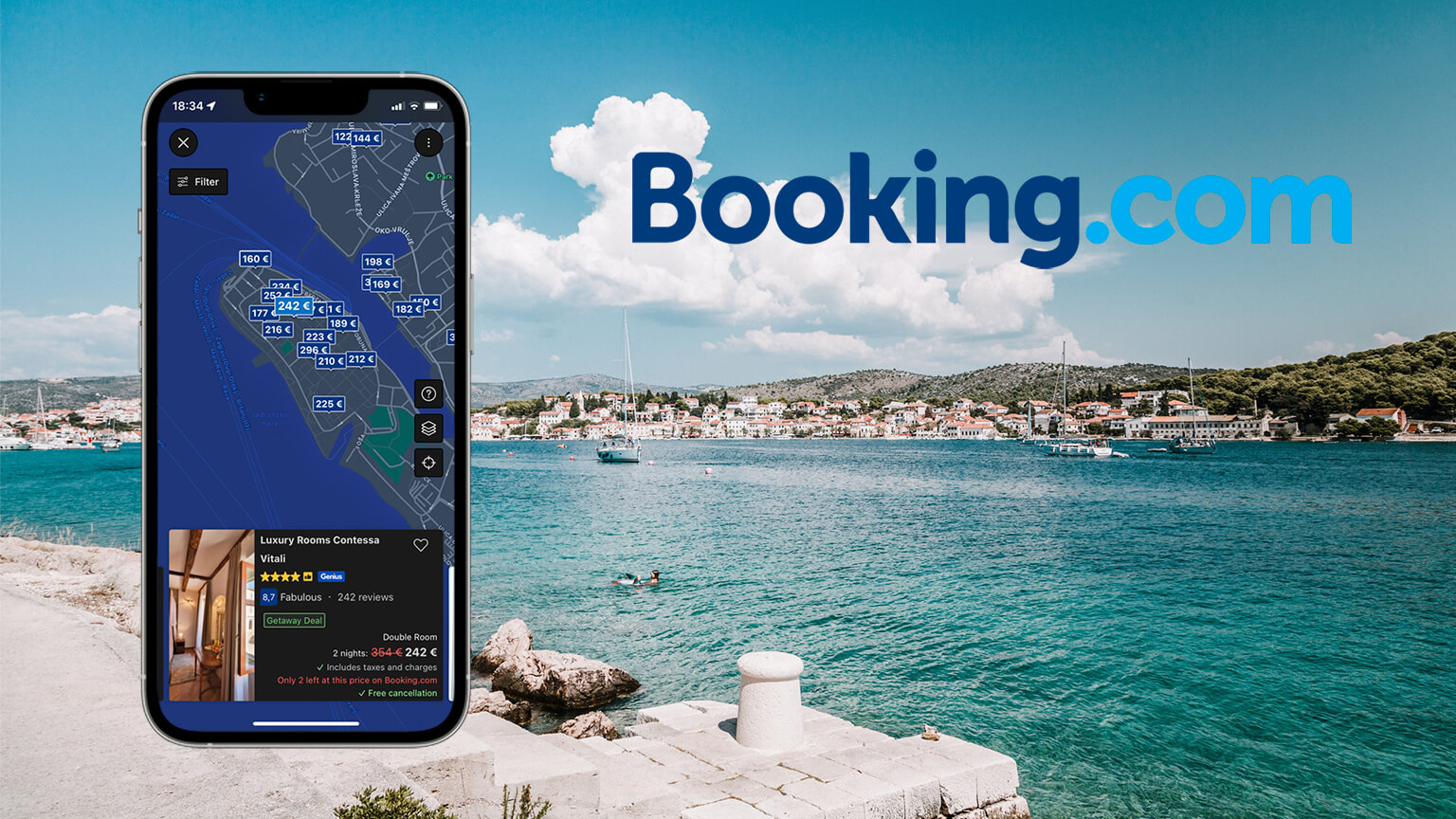
We do not want to recommend an app based on bad experiences, but the truth is that during the high season in Croatia there are many cases of scams to tourists looking for accommodation. Many of them book accommodations that cancel reservations or raise their prices at the last minute, or even didn't exist in the first place! Therefore, having an application like Booking.com is a good idea if you want to see alternatives with ratings and reviews that give you more security before booking your accommodation, as well as being in contact with a customer service that avoids this type of awkward situations.
Available at Apple App Store and Google Play.
FlixBus
During summer at its height, transportation alternatives for traveling around Croatia are not in short supply. Trains, planes, ferries, catamarans... you name it. However, the leading transport system in Croatia continues to be buses. Everyone, both locals and tourists, can basically get to any corner of the country, and from anywhere in Europe, by bus.
The German company FlixBus is the best option if you plan to reduce travel costs and choose the bus as your transportation alternative if you travel from another country to Croatia. Its modern fleet will bring you to and from Croatia with the comfort that a well-deserved vacation deserves.

Available at Apple App Store and Google Play.
Arriva Croatia
This time, we will add another bus application. Believe it or not, FlixBus is not necessarily the favorite in the country. Although you will see their green buses at all stations and roads in the country, it cannot be said that the margin of preference is as distant as that of Arriva Croatia, and for a special reason. FlixBus, while connecting to almost every city in Croatia, may not reach everywhere. Something that you will find in Arriva Croatia, which not only offers you tickets to big cities like Zagreb, Split, Rijeka, Osijek, Zadar, Dubrovnik, Pula or Šibenik, but also to more remote and smaller towns and villages throughout the country (and even the islands and National Parks!).
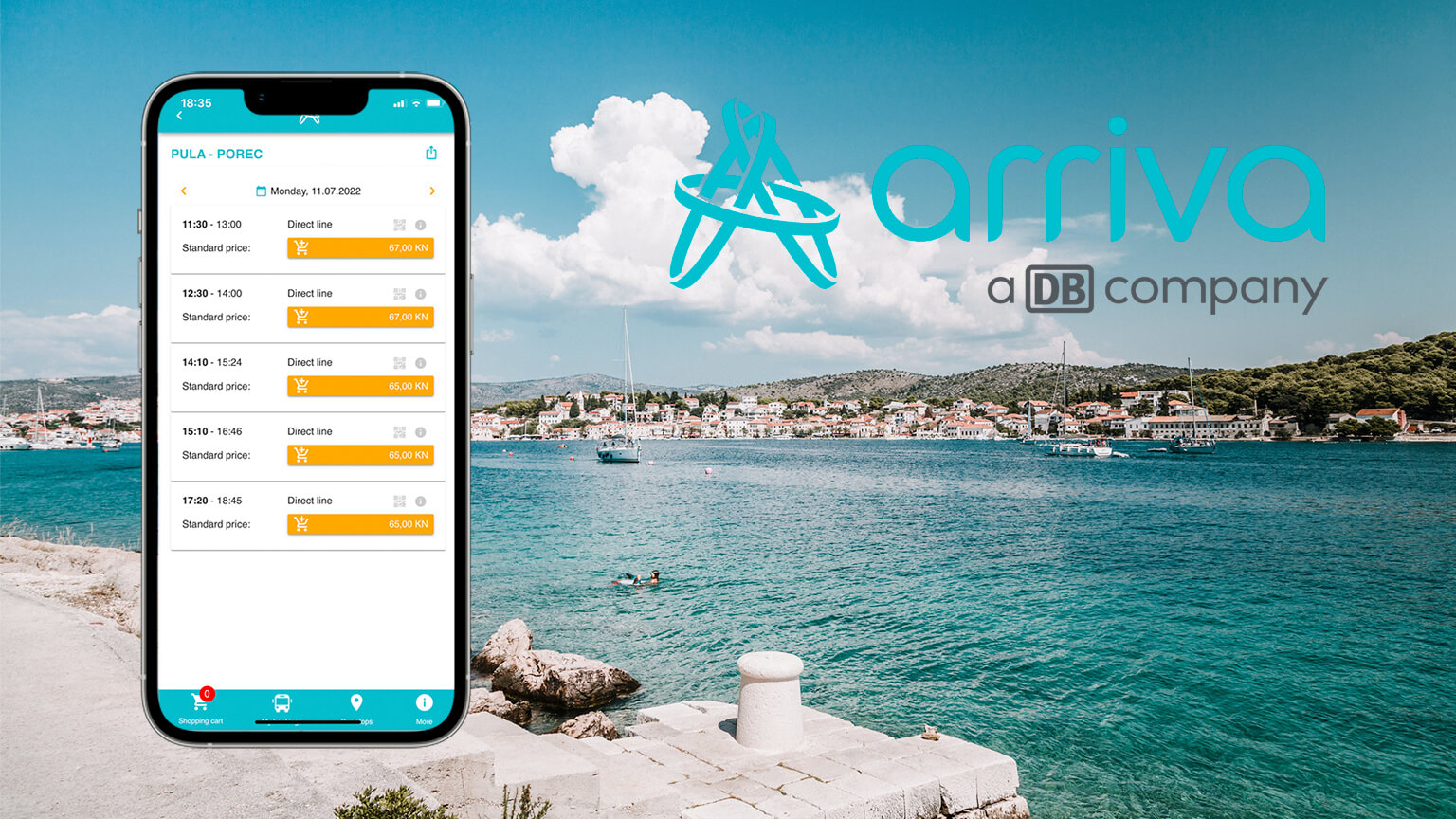
Likewise, Arriva Croatia has a huge fleet of buses and, therefore, a large number of schedules and competitive prices that will motivate you to compare your options between both companies. At the end of the day, it doesn't hurt to organize a trip around Croatia using buses from both Arriva Croatia and FlixBus. Both have mobile applications that allow you to check their schedules, reserve seats, and download your tickets to your phone.
Available at Apple App Store and Google Play.
BlaBlaCar
Here we present a somewhat different transport application. It is the app that almost everyone has recommended to me in Croatia, and very recently I used it for the first time to travel from Zagreb to Rijeka.
BlaBlaCar is a French application that allows you to choose a city or town of departure and destination, and it will give you a list of drivers who will also travel that route on the day you choose to travel. The drivers are the ones who offer their departure and arrival times, as well as the exact departure and arrival points in the respective cities. The choice is yours. You'll be able to see who else will be traveling with you, as well as ratings and reviews from past passengers.
BlaBlaCar is a great alternative if you travel light from one city to another, want to get there faster, and to make it more interesting, to meet people during the trip through good conversations.

Once the driver has been chosen, you will receive a confirmation from him and you will be able to obtain his contact information to coordinate the meeting at the starting point. We recommend that you confirm your trip in advance, and also bring cash as it is generally the preferred form of payment for drivers.
Available at Apple App Store and Google Play.
Jadrolinija
What's a Croatia vacation without an island getaway? Of course, the Croatian Adriatic coast is long enough to find a beach that suits your needs, but there is a special feeling of getting on a ferry and exploring one of the more than 1000 Croatian islands. If that is your wish, then make sure you have the Jadrolinija app installed.
Jadrolinija is the national ferry company in Croatia, and while their website or port offices have long been the most common places to buy your tickets, their mobile app is also a great option as you never know when you may be tempted to change your plans and hop on a ferry.
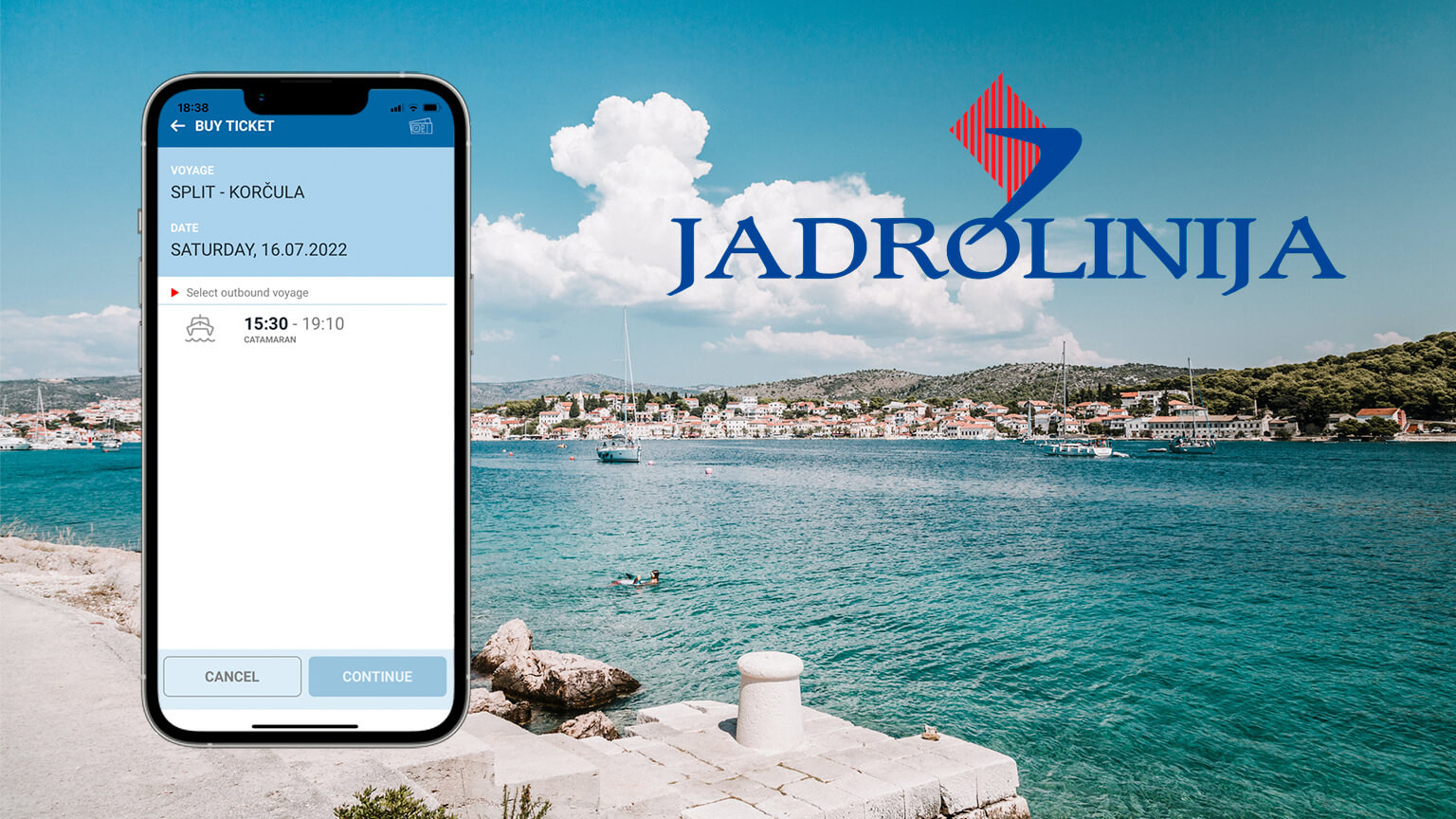
In their app, just choose your departure ferry port and you'll be able to see the destinations you can go to. This will allow you to see your table of times and prices according to the number of passengers. You can also find information about the location of the ferry ports in Croatia. The app allows you to pay by debit card.
Available at Apple App Store and Google Play.
Tripadvisor
Although Google Maps has a huge database of reviews and ratings to help you make a decision on where to go, stay or eat, Tripadvisor remains a benchmark among travel guide applications. Perhaps what positions Tripadvisor as a leader in the category is that you only have to enter a destination to which you plan to go to obtain a wide range of possibilities on what to do and see during your trip.
It is an application widely used by companies of all kinds in Croatia, and that is why you will not find it difficult to find tours, activities, or workshops that allow you to have a different vacation. Precisely, you will be able to use the ratings and reviews to validate the quality and reliability of these activities, and not take any risks.
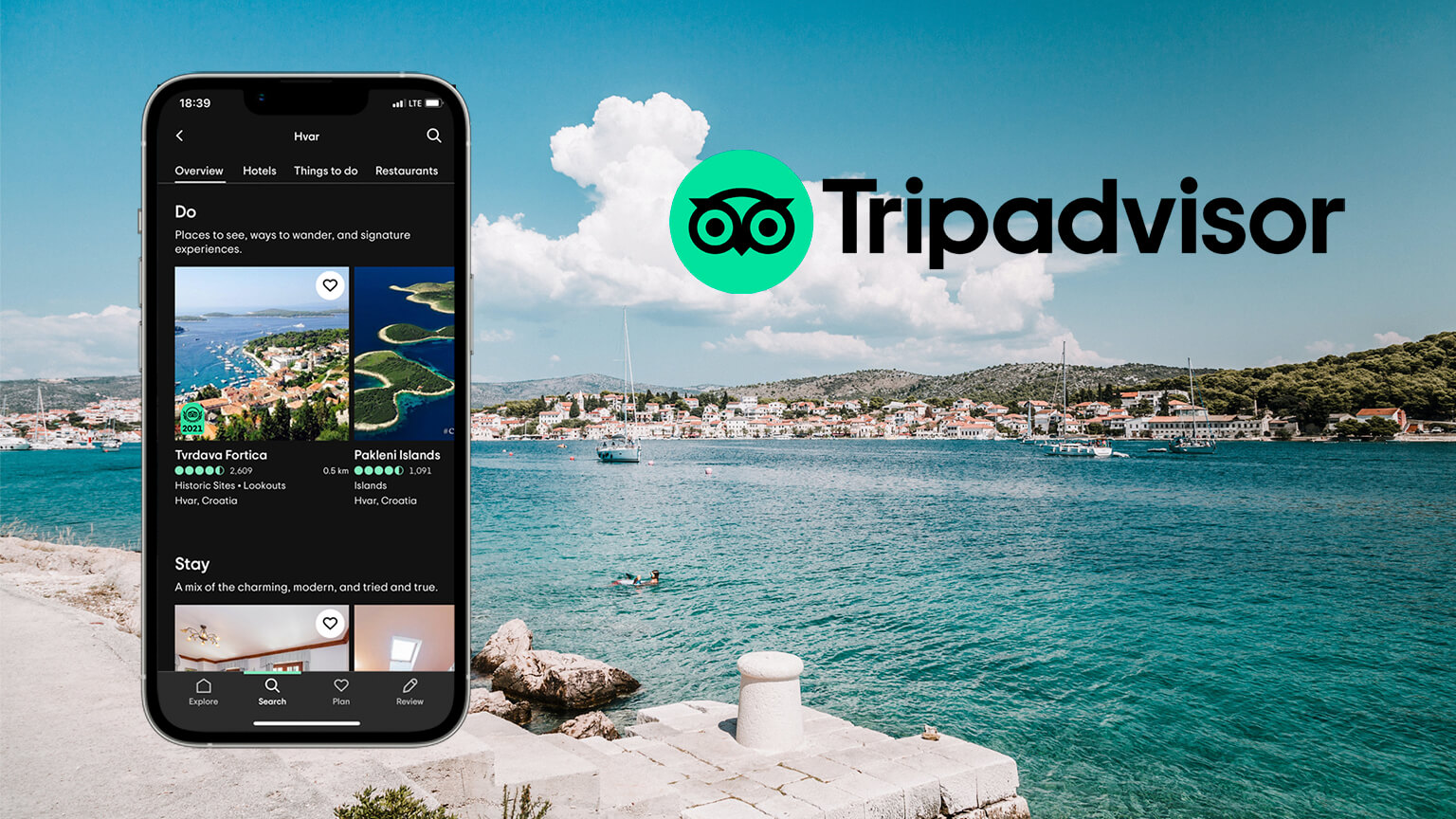
There are all types of tourists, and among them, there are those who do not usually arrive with pre-made itineraries, since for them spontaneity and improvisation add some emotion and a feeling of adventure to their vacations. Therefore, Tripadvisor is a great tool to get inspired and make a list of places to see and things to do in your destination in Croatia.
Available at Apple App Store and Google Play.
Uber
It may not have the best public transport in Europe, but Croatia is a country where you can get around without any problems. If time is not an issue for you and you enjoy urban and rural landscapes while onboard a bus or tram, then there is no reason to despair.
However, it is true that from time to time you will have to rush to the airport, the train station, the bus station, or the ferry port or you will lose your trip. Similarly, you never know when you may need to go to a hospital (when it's not an emergency) or maybe you've booked a tour where you have to meet the agency at a certain place and time. In these and many other cases, the virtue of patience is probably not enough and nerves do not allow you to wait for a bus or tram, which sometimes you do not know when they may arrive.
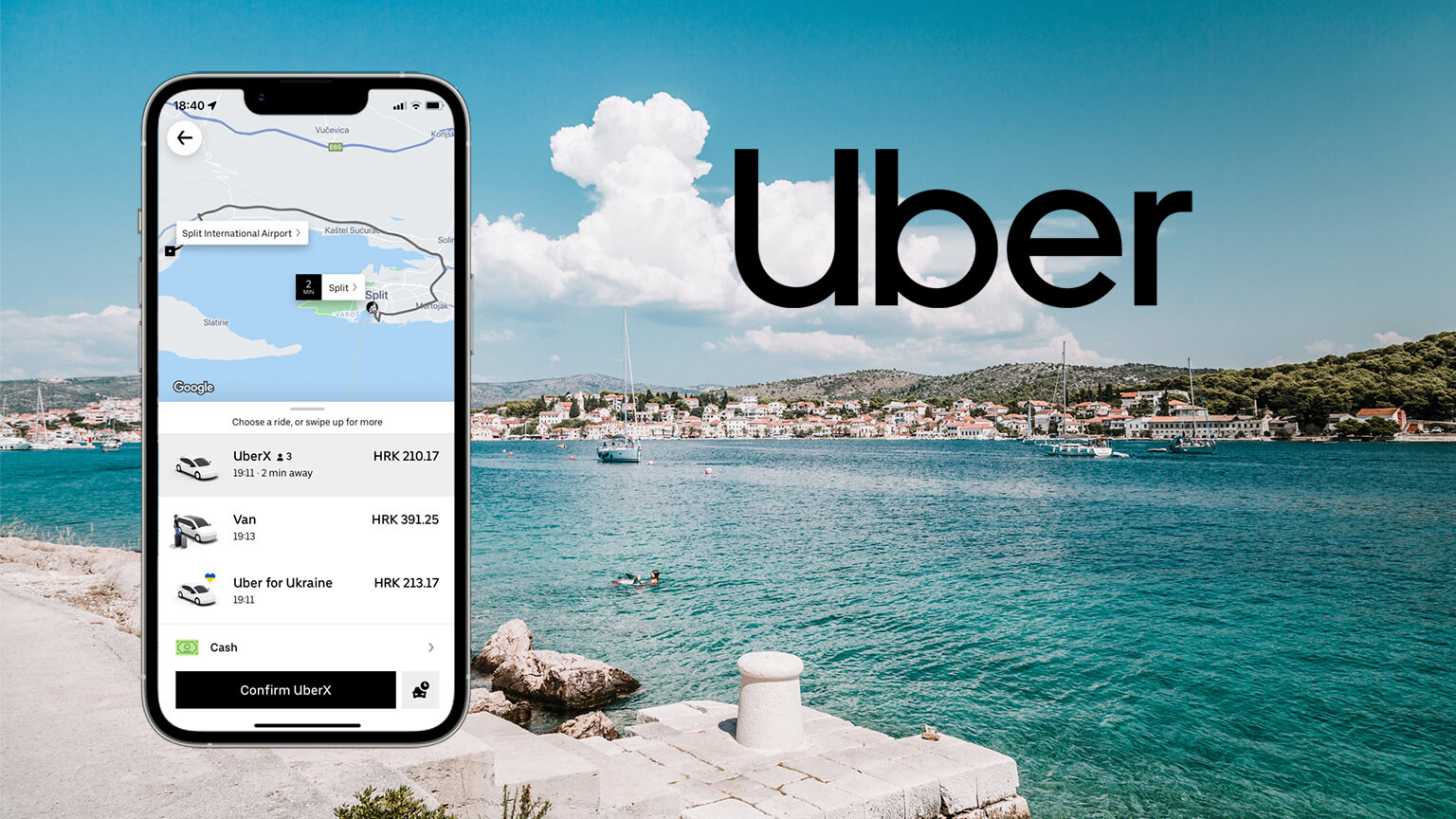
In that sense, it might be a bit obvious that having a taxi app installed is always a good idea. Yes, there are taxis that can take you from the airport to the city and vice versa but don't trust their rates. It is better to grab the WiFi and book the taxi from an app. While many in Croatia will recommend apps like Cammeo or Bolt, I have personally found Uber to be quite reliable and effective, with reasonable and fair rates.
Available at Apple App Store and Google Play.
Today's smartphones contain enough storage to install dozens of apps, so you shouldn't feel limited to just these ten. The idea is to travel calmly and happily, so the more apps you find that can help you organize your vacation, the better! Find apps that help you learn about private boat rentals, weather apps, airline apps, apps with biking or hiking trails, and more. Everything helps!
For more on travel in Croatia, follow TCN's dedicated page.
Getting Around Rijeka by Bus Just Became Easier With Google Transit Now Available in Maps
January 15, 2022 - The transit feature in Google Maps allows users to view public transportation options and keep track of departure times and stops
IT company Exevio from Rijeka helped implement the Google Transit feature in their city after a year of collaboration with Google, announced the bus company Autotrolej.
Autotrolej allowed Google access to their unified database of routes, timetables and other relevant data. After a successful collaboration of the local bus company with the tech giant, getting around Rijeka by bus will be easier than ever for locals and tourists alike.
Google Transit is a service within Google Maps that allows users to view public transportation options including detailed information about the route; it lists the next few departure times and all the stops between the starting point and the end destination. In Rijeka, for example, the user is guided to the nearest bus stop; once they board the bus, they can track the route along the way and are alerted to the destination stop.
Why enthusiastically report on a feature that’s technically a navigation standard these days? This isn’t exactly groundbreaking technology in this day and age; the Transit feature has been available in Zagreb since 2014, and is also available in Google Maps for Osijek and Pula.
However, it’s something that Rijeka has been sorely lacking until now. With the local bus network being the only available mode of public transportation in Rijeka, the way information is presented leaves a lot to be desired.
Even though the Autotrolej website provides detailed information regarding bus lines, routes and departure times, one would need to know their way around the city quite well for the said information to make sense.
It’s unlikely that first-time visitors to the city would be able to smoothly navigate the bus network based on Autotrolej maps and timetables alone, and Google Transit will certainly help tourists get around town by bus more easily. A small but important step in making the public infrastructure in Rijeka more tourist-friendly.
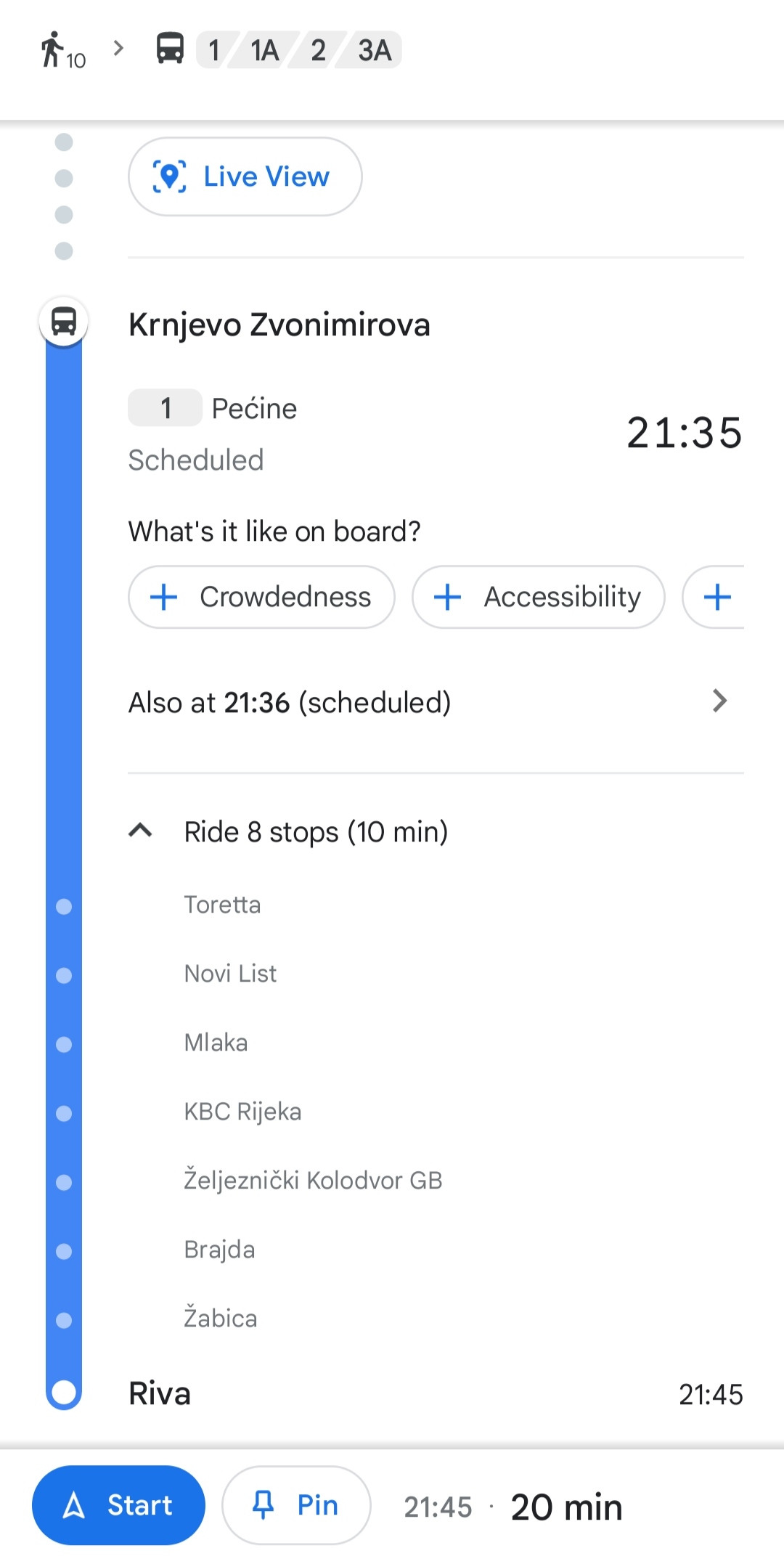
Locals are sure to embrace the new navigation service as well - this particular local is happy to attest to this. While we do have a solid grasp of all the bus routes in town, departure times and schedules have always been somewhat of an enigma.
Until now, the timetables only specified departure times for the first stop of any given line, and some of the lines operate on considerably long routes. Knowing when a bus is departing from the other side of town doesn’t mean much, especially during rush hour or in busy downtown traffic. Add to that the frequent schedule changes that are easy to overlook, and you end up missing a bus by a few minutes and having to wait for another 20 minutes quite often.
Unlike the lucky folk in Zagreb where tram stops are equipped with digital displays showing when the next trams are about to arrive, so far in Rijeka we could only resort to waiting around and hoping that a bus will eventually show up. Not anymore!
Thanks to Google Transit, departure times are now listed for every bus stop in town, and even though the information might not be 100% accurate as of yet, it’s definitely a massive help when getting around town by bus.
I put Transit to the test a few days ago to see how reliable and accurate the schedule is in Rijeka. I changed location a few times and used them as starting points, and picked a few random addresses as the end destinations just to get route suggestions and a list of estimated times of arrival.

In this example, bus no.2 was supposed to show up exactly at 12:00pm at this stop. It ended up arriving a minute early, not too bad!
The other two showed up exactly on the specified time of arrival. It’s a relief to have a bit more certainty when it comes to public transportation - it looks like the dark ages are finally behind us indeed.
While the schedules are currently based on fixed Autotrolej timetables, Google Transit in Rijeka should soon provide public transportation updates in real time as well.
How Far Can Zagreb Grič Cannon Fire? Ideal Conditions View of the Fire Range
July 21, 2021 - Ever wondered about the Zagreb Grič Cannon fire? TCN reporter Ivor Kruljac played with Google maps to provide an answer in ideal conditions.
While Zagreb Grič Cannon did not shoot at the time of writing this article, it is still one of the key symbols of Zagreb, and memories of its bang during midday is a vital part of the living in Zagreb experience.
As TCN previously wrote, the Grič Cannon was first introduced on January 1, 1877, and was located at the State's Meteorology department, back in the times when Croatia was part of the Austro-Hungarian Monarchy. It wasn't until 1927 that it was moved to Lotršćak, where it is situated to this day. In addition, the current cannon serving this purpose is actually the fifth to do the job and was donated to Zagreb by the Yugoslavian National Army (JNA), during Universiade.
Apart from signaling noon, the old legend says the Grič Cannon also served a defensive purpose. As TCN previously wrote, legend has it that the Ottoman commander Hasan Pasha (Hasan Paša) settled his army along the coast of the Sava river, in today's area of Novi Zagreb. He was preparing to cross the river and invade the city, but before that, he was about to have lunch, and Zagreb fired a cannon in the Ottomans' direction, close to Hasan, blasting a chicken he wanted to eat. The shot scared the hell out of the Ottomans, and they retreated, leaving Zagreb totally intact.
The legend itself is part of a book titled ''The Grič Cannon legend'' in which writer Dubravko Horvatić has gathered 20 Croatian legends, and the book is a mandatory book report title for Croatian pupils in the third year of elementary school.
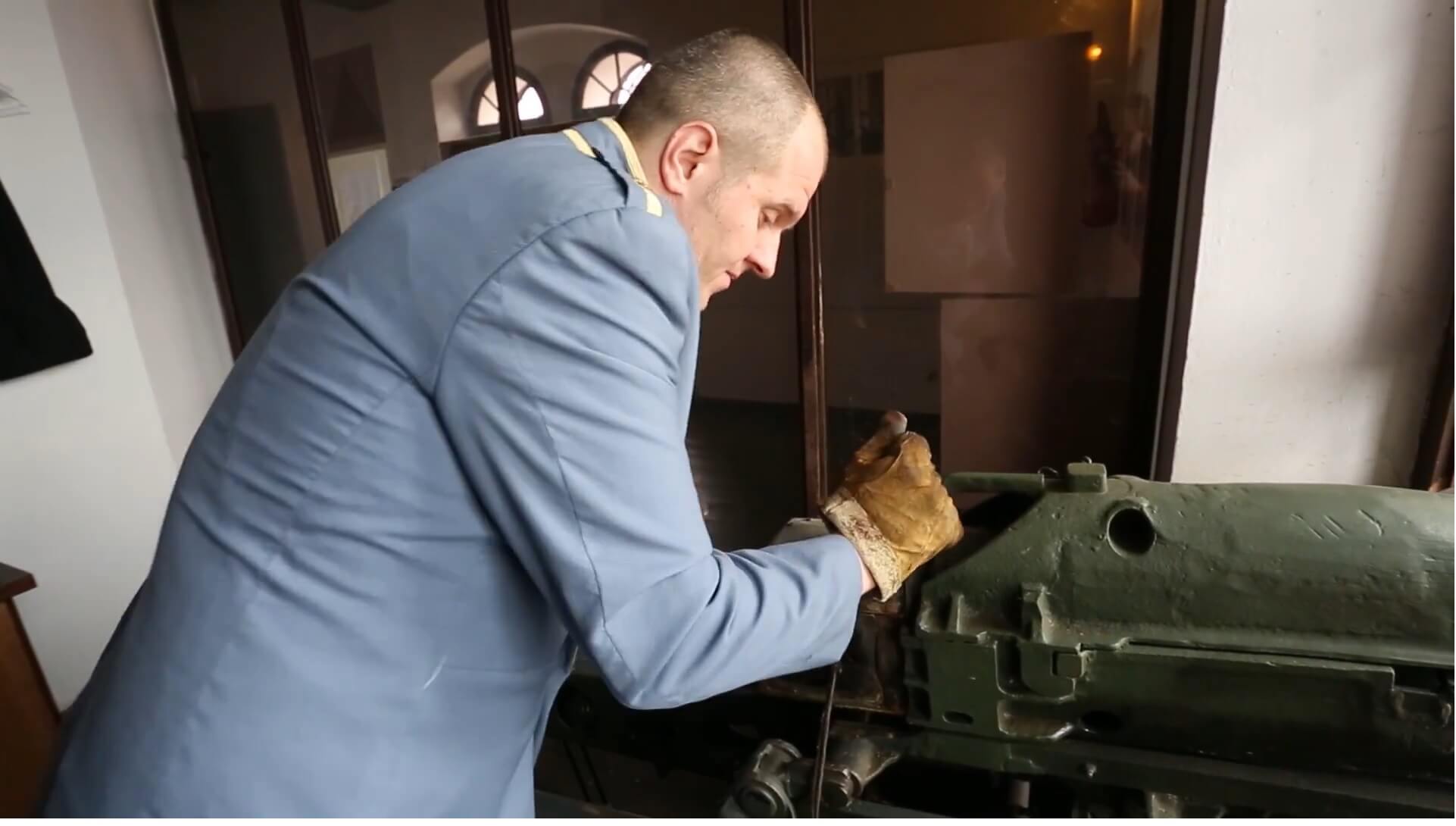 Preparing the cannon, screenshot / PIXSELL
Preparing the cannon, screenshot / PIXSELL
Legend vs facts
With the story taking place way back in the 16th century, it's obvious the tale is just a legend as the cannon wasn't introduced until the 19th century. Still, it's a cool story, and a bit of a twisted mind can't but help think: what's the range you could actually shoot with the Grič Cannon?
As the Wikipedia page says, and as a member of the Zagreb Tourist Board in Lotrščak tower confirmed to this sleuth reporter, the current cannon's range is 7,929 metres (almost eight kilometres), and the sound of the blast has a solid 140 dB.
Legend says Hasan Paša was on the coast of the Sava river, which means he was in southern Zagreb, and sure enough, the Grič cannon is facing south from Lotrščak. The cannon floor also has windows looking in each direction, meaning you could move the cannon to north, west, or east.
When playing with Google maps distance measuring tools, you can see that the smallest distance between the Sava river and Lotrščak is, give or take, about 3,1 kilometres. So, the current cannon, under the right angle, could easily make that shot.

The distance between Fort Lotrščak and Sava river, screenshot / Google Maps
Apart from the possibilities of buildings and hills messing up the shot, there are other things that need to be taken into consideration. As the Department of the Army U.S. Marine Corps identified back in 1996, in their manual, there are many factors that affect artillery fire.
Muzzle velocity, projectile weight, range wind, air temperature, air density, even the rotation of the Earth, not to mention the overall condition of the barrel, all of which are challenges that could limit the cannon's full potential. And yes, Google maps isn't really the most precise tool on the planet, but let's take a shot in the dark and see how far the Grič cannon could actually fire (keep in mind these projections are made solely based on the maximum range, and the factors aren't taken in account but are mentioned for the sake of trivia knowledge).
South! Aim! Fire!
Let's start from the cannon's current position. Assuming no buildings, hills, or anything else gets in the way, and you're a physics genius that managed to isolate yourself in Lotrščak with live ammo and achieve a clear straight shot, your cannonball makes an impact all the way in line with Donji Čehi (but a bit away to the east from that place). Donji Čehi, along with Gornji Čehi, used to be independent villages but are today part of the City of Zagreb. With only 1,72 km2 of length, the place is inhabited by 232 residents, based on a 2011 census.

Grič Cannon maximum range to the south, screenshot / Google Maps
West! Aim! Fire
Continue clockwise and set your cannon to take a shot towards the west, with a range of little under eight kilometres. You can score all the way to Krnska street in Gajnice. Krn is both a name of a mountain and a peak (2244) in neighbouring Slovenia. The mountain is a part of the Triglav National Park in Slovenia (and if this side note makes your attention turn to Slovenia, be sure to check our friends at Total Slovenia News). Gajnice is a neighbourhood in Zagreb that is inhabited by around 10,000 residents. The neighbourhood is notorious for its pretty lousy connection with the rest of the Zagreb, and local residents often complain about infrequent buses that connect them to Črnomerec from where they can travel to the city centre. Well, at least, the centre doesn't aim at them with a cannon.

Grič Cannon maximum range to the west, screenshot / Google Maps
North! Aim! Fire!
The new target, or perhaps better to say lucky shot, lies towards the north. Don't worry about Medvednica mountain getting in the way of a clear shot towards Zagorje, as the range isn't long enough. The shot will hit Medvednica mountain, more precisely, to the close proximity of Tusti Vrh. This location is 648 metres above sea level and serves as a stand for a communication station with some antenna polls. But, there's no need to shoot the place up and destroy a lovely piece of nature, which also serves as an important social role in regards to telecommunication. Instead, you can visit the place as the Gračani trail leads there.

Grič Cannon maximum range to the north, screenshot / Google Maps
East! Aim! Fire!
Finally, it's time to ruin someone's day in east Zagreb (fortunately, no person was hurt during these simulations in reality). Specifically, this applies to whoever lives in Retkovec III near Bruma Interijeri d.o.o., a company specialised in woodwork.
Petkovic is a neighbourhood that is part of the Dubrava district. It's mostly a residential place, like much of eastern neighbourhoods considered to be a bit of a rough area to live in. Still, things aren't as bad as they were as before.

Grič Cannon maximum range to the east, screenshot / Google Maps
Shooting blanks
Again, it's worth noting these projections aren't accurate science and imply conditions which are perfect. Of course, in an ideal world we wouldn't need firearms and everyone would be living in peace. In reality, where these ideal conditions don't apply, residents of the aforementioned areas, but also citizens in general, can be relaxed, as the ranges are irrelevant.
 Shots fired aftermath, screenshot / PIXSELL
Shots fired aftermath, screenshot / PIXSELL
''It's worth noting the cannon is modified, and it can't fire live ammo,'' warned the Zagreb TB official, who was a bit puzzled as to why I would even ask her for the potential range of a weapon overlooking the Croatian capital from Fort Lotrščak. But, as I'm sure any researcher will confirm, scientific curiosity often calls for asking controversial questions.
Learn more about Zagreb on our TC page.
For more about history in Croatia, follow TCN's dedicated page.
Google Maps Returning to Film Croatia After a Decade!
April the 8th, 2021 - After approximately a decade, Google Maps is set to return to the country's streets and roads to film Croatia once again in order to make what are likely to be many updates and changes.
As Darko Bicak/Poslovni Dnevnik writes, the funny looking Google Street View cars are returning to film Croatia this spring. In the coming months, the car will embark on a journey touring many cities, towns and covering many streets and roads across the entire country. The goal of the Google Maps Croatian re-run will of course be to update Google Street View photos of cities, roads, and highways across the Republic of Croatia on the wildly popular Google Maps platform.
Thanks to the Google Street View service, users have the opportunity to view most Croatian cities and many historical sights such as Orlando's Column in Dubrovnik, St. Jacob's Cathedral in Sibenik and much more, as well as natural beauty the country possesses such as Papuk Nature Park.
Google is aware that infrastructure in cities, but also between cities, alters and develops over time, sometimes quickly and that sometimes natural disasters leave their mark on the landscape of a country, so their photos need to be updated regularly. The new photos taken as they film Croatia once again will help users navigate even better and plan their upcoming trips more easily.
Street View is a popular Google Maps feature available in more than 220 countries around the world, as well as parts of the Arctic and Antarctic. Thanks to the platform, users can see different streets and cultural and take a peek at national heritage sites in 360 degrees. It is also available via Google Earth, as is Google Maps for mobile phones.
Here in Croatia, the Street View service has been available since back in 2012 and is constantly updated to provide the most accurate picture of reality within the country. In addition to the streets and roads, Google also photographed pedestrian zones of various Croatian cities and other places to which cars don't typically have access, such as Split's Riva or the very heart of the Old Town of Varazdin.
For more, follow our lifestyle section.


